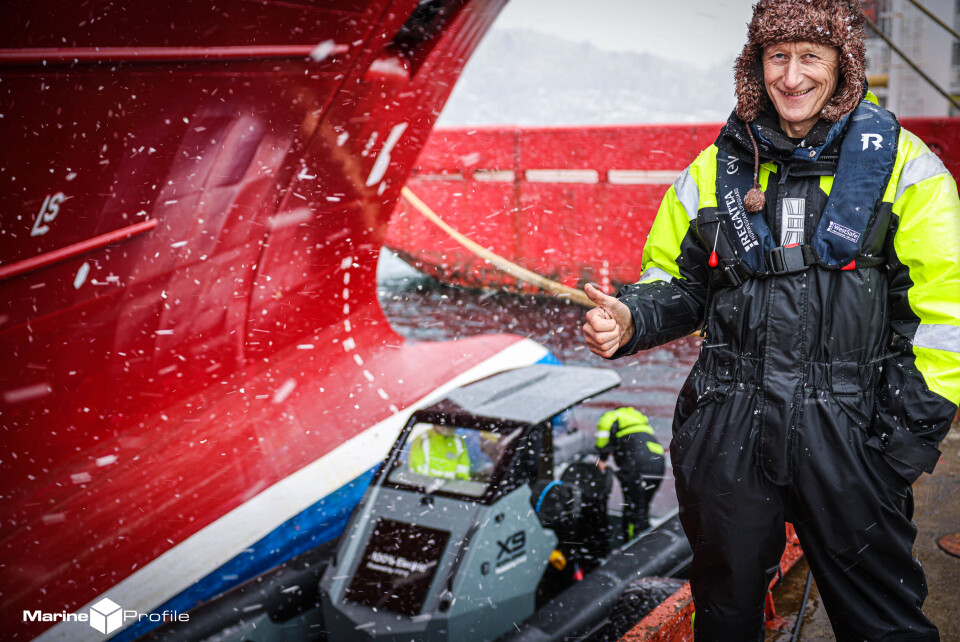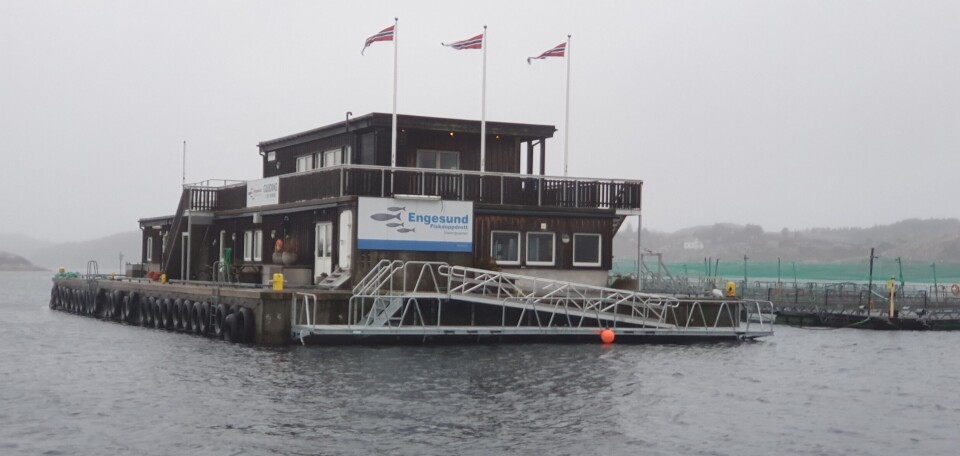
Coastal odyssey is plug for electric aquaculture boats
The makers of an electric propulsion system for boats have travelled 260 nautical miles* along Norway’s coast in an electric vessel to show its capabilities to salmon farmers and other potential customers – although they didn’t do it on a single charge.
“The market is definitely very interested now and especially farmers see that very many of the tasks they have can be covered by electric propulsion,” said Leif A Stavøstrand, founder and chief executive of Evoy AS.
Stavøstrand, who is a former tanker captain with a degree in naval architecture, established Evoy in 2018, and the company now has 30 employees.

Fully possible trip
Accompanied by sales manager Trond Strømgren, Stavøstrand has recently been on a journey along the west coast with the electric vessel Evoy Explorer, a Goldfish Boat AS X9 rigid inflatable boat (RIB).
“The trip went from Florø to Stavanger which is approximately 260 nautical miles with all detours and visits. The trip was primarily to visit interested customers, but also to show that such a trip with a full-electric high-speed boat is fully possible,” Stavøstrand told Fish Farming Expert’s Norwegian sister site, Kyst.no.
The journey was completed without problems, according to the chief executive.
25-30 knots
“Perhaps the biggest challenge we experienced on the trip was a lot of sea on Sletta, but the boat and the Evoy system handled this well and we could go at a good speed of 25-30 knots even with two metres of sea,” he said.
The inboard and outboard motors the company makes are intended for fast boats of around 20 to 50 feet. The system in the Evoy Explorer is the second generation of Hurricane 400+ horsepower unit and Stavøstrand believes the engine system is very relevant for aquaculture.

Letter of intent
“Electrification is something that has a high focus among farmers and both (state green energy funder) Enova and companies such as Fjord Maritim, AKVA Group and Moen Marine have done an important job here,” said the Evoy boss.
“The market is definitely very interested now, and farmers especially can see that very many of the tasks they have can be covered by electric propulsion. We recently signed a letter of intent with (cod farmer) Gadus for 15 systems, for which they also received Enova support. We have several customers who think along the same lines.”
Stavøstrand pointed out that Evoy has delivered several of the Explorer systems to, among others, AKVA subsidiary Polarcirkel, Hukkelberg and Maritim Partner for boats supplied to the aquaculture industry.
“Also, here we are talking about high-speed personnel transport boats with up to 12 passengers,” he said. “The system will also be type approved before the summer so that we can deliver it to workboats, both new and old.”
13 charges
Stavøstrand and Strømgren were able to charge their vessel’s batteries during their journey, but Stavøstrand believes the coast generally needs more publicly available fast chargers for boats.
“Florø and Bergen have got their electric chargers and in the Baroni district of Rosendal there will be one soon. At the same time, there are many more being planned,” he said.
“We are actively working with Plug AS towards the goal of covering the entire coast with fast chargers in the long term. On the trip we charged at 13 different places along the way. We could probably charge less, but it’s okay to keep a good level of battery for safety. Charging has taken place at fish farms, boat workshops and harbours and has generally worked well.”
*A nautical mile is slightly longer than a mile on land, equalling 1.1508 land-measured (or statute) miles. The nautical mile is based on the Earth’s longitude and latitude coordinates, with one nautical mile equalling one minute of latitude.






















































